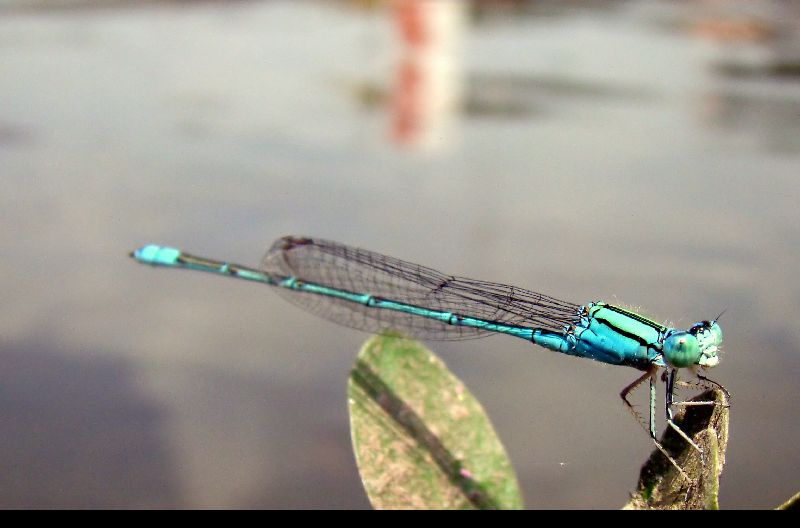Pune city is blessed with five major rivers, Pawana, Devnadi, Mula, Mutha, and Ramnadi, as well as lakes like Pashan Lake. Wetlands like these play a major role in biodiversity maintenance, water provision and groundwater generation. The Bhingori Project aims to connect citizens to wetland conservation using dragonflies as a connecting link.
Generating on-ground data and involving citizens in doing so is an excellent way of making science more accessible. It also aids in reconnecting people to the conservation of shared wetland resources. This project is led by Dr.Pankaj Koparde of MIT World Peace University, Pune and is funded under the EarthWatch Citizen Science Fellowship.
Dragonflies are indicators of Wetland Quality
Odonates (Dragonflies & Damselflies), the acrobatic, slender flying insects are an integral part of the wetland ecosystem. In fact, they are crucial indicators of wetland quality. They keep pests like mosquitoes in check by preying on them. Documentation of the dragonflies is important to gauge the health of their habitats which are freshwater bodies and wetlands. The Bhingori project aims to do just that by involving citizens in odonate research and biomonitoring.
During the project, citizens documented a staggering 66 odonate species within Pune city limits. Some species which were found abundantly in the project included the colorful blue and golden Senegal golden dartlet,the tiny Pygmy dartlet The Crimson marsh glider,the long distance migrant-Wandering glider and the Saffron faced blue dart.

The high species richness is indicative of the biodiversity potential of the landscape. Though the species number recorded is high, odonates are continuously threatened by water pollution, disturbance, and development projects which damage the riverside habitat..
Pune’s Citizens rallied for Dragonflies!
The participants collected odonate diversity data from the Pashan Lake, Mula River (Vishal Nagar), and ARAI hills among ten collection sites. These activities saw strong public participation with more than 100 people involved in this monitoring. The participants were also trained to use citizen science apps like iNaturalist to collect baseline biodiversity data. Involving citizens in such programmes to report on-ground data will bring the public to the forefront of conserving wetlands.
“The project will add value to odonate mapping and instil a sense of belonging in citizens about the natural resources they share. This will in turn initiate conservation action”, Dr. Koparde told. Arajush Payra, the project researcher, also shared his thoughts about the citizen science project. “Dragonflies & Damselflies are beautiful but under-rated freshwater insects. They are often referred to as helicopters. Most people emotionally connect instantly with dragonflies as they have often played with them during childhood. With this thread, we connect people to their wetlands. We see a positive change in the attitude of people towards rivers and wetlands as they learn more about these incredible creatures.”
Madhura Shelke, an MIT student, says – “Watching dragonflies was a beautiful experience. I didn’t only enjoy observing biodiversity but actually learned biodiversity monitoring scientifically. I observed birds and dragonflies, their movements and their ecological niche keenly. I got aware of their problems because of human interference. Citizen science projects like these help common people to nourish their enthusiasm about nature and spread more awareness”.
Another citizen scientist, Chintan Sheladiya, expressed that wetlands are important for our survival and we all should vow to their conservation.
Conclusions
The little fairies might be a fantasy, but watching dragonflies skimming above water is no less than a fantasy. Only collective action by citizens will make sure that there is a home for all the wonderful elements of nature within our cities.
While citizen science for birdcounts is in a good state due to websites like ebird,there is a lot more scope for nationwide coverage regarding documentation of insects. Hopefully, the power of citizen science initiatives will take place in other cities too,to document and understand our rich odonate biodiversity
Written by: Arjit Jere
Help us Help Them! Think Wildlife Foundation is a non profit organization with various conservation initiatives. Our most prominent campaign is our Caring for Pari intiative. Pari is a rehabilitated elephant at the Wildlife SoS Hospital. 25% of the profits from our store are donated to the elephant hospital for Pari. Other than buying our wonderful merchandise, you could donate directly to our Caring For Pari fundraiser.
